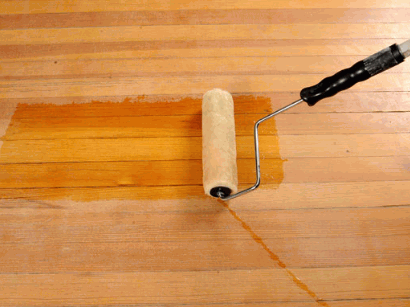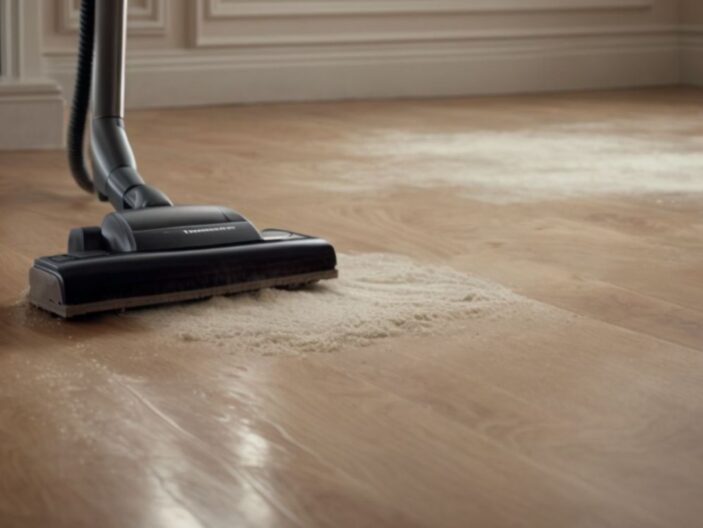Are you struggling to get rid of plaster dust on your beautiful wood floors? In this article, we will discuss the importance of cleaning plaster dust off wood floors and provide you with a list of essential tools needed for the job.
We will walk you through a step-by-step guide on how to effectively clean plaster dust off wood floors. Stay tuned to learn how to prevent plaster dust from getting on your wood floors in the first place.
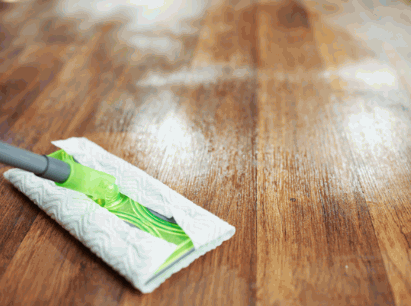
Why Is It Important To Clean Plaster Dust Off Wood Floors?
Maintaining clean wood floors is crucial to preserving their beauty and longevity, especially when it comes to removing plaster dust. Regular cleaning not only enhances the appearance of hardwood, tiles, or laminate floors but also contributes to their overall maintenance and restoration.
Proper maintenance practices, tailored to the specific type of flooring, play a vital role in ensuring their durability. Hardwood floors require gentle cleaning with a soft mop and specialized hardwood floor cleaners to prevent water damage and maintain their shine. Tiles benefit from regular sweeping and occasional deep cleaning to prevent grout discoloration and maintain a uniform look. Laminate floors, on the other hand, need gentle cleaning with a damp mop and avoiding excessive water, as it can damage the protective layer and lead to warping. By understanding the unique care requirements of each flooring type, homeowners can prolong their lifespan and retain their aesthetic appeal.
Check out: What Are The Steps Of Plastering
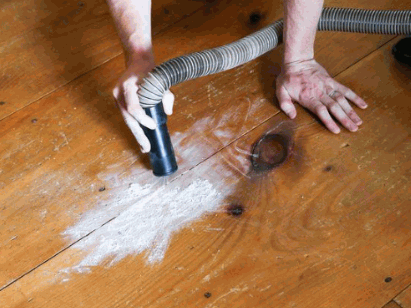
What Tools Do You Need To Clean Plaster Dust Off Wood Floors?
Cleaning plaster dust off wood floors requires specific tools and equipment to ensure effective removal without causing damage. These tools include a dustpan, broom, vacuum cleaner, and a microfiber cloth for damp cleaning.
- The dustpan is crucial for collecting larger debris, while the broom helps sweep away loose dust particles.
- A vacuum cleaner with a brush attachment can reach into crevices and corners to extract deeply embedded dust.
- The microfiber cloth, when lightly dampened with water or a gentle cleaning solution, can safely wipe away any residue without leaving streaks or scratches on the wood surface.
By using these tools correctly, you not only achieve a clean floor but also maintain its integrity and longevity.
Soft Bristle Brush
A soft bristle brush is a valuable tool for cleaning wood floors as it effectively removes dust and debris without causing scratches or damage. While DIY cleaning is common, professional help can also be sought for deep cleaning and maintenance.
Using a soft bristle brush ensures that the delicate surface of wood floors is protected during the cleaning process. The gentle bristles help to lift dust particles without abrasive friction, maintaining the integrity of the floor’s finish.
When opting for professional assistance, experts can conduct thorough cleaning tasks that may require specialized equipment and solutions. This ensures a more comprehensive approach to maintaining the beauty and longevity of your wood flooring.
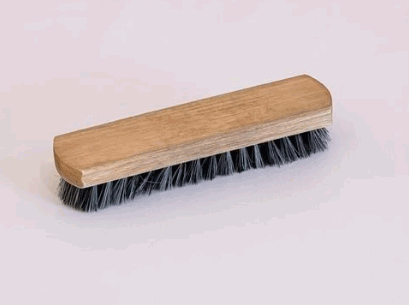
Vacuum Cleaner
A vacuum cleaner is an essential tool for cleaning wood floors efficiently by sweeping up dirt, dust, and debris. Regular vacuuming is key to maintaining and restoring the beauty of wood floors.
Not only does a vacuum cleaner help in removing surface dirt and allergens, but it also prevents scratches and abrasions that can occur from debris buildup. By regularly vacuuming your wood floors, you can prevent premature wear and tear, ensuring they retain their original luster and durability. Vacuuming helps to preserve the natural color and texture of the wood, prolonging the lifespan of your floors. It is a fundamental step in the overall maintenance routine for wood surfaces, contributing to a cleaner and healthier indoor environment.
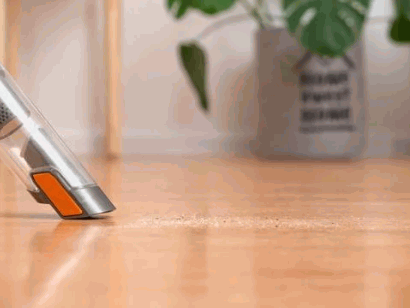
Microfiber Cloth
A microfiber cloth dampened with water is ideal for gently wiping wood floors to remove dust and residues effectively. Its gentle cleaning action helps restore the shine and cleanliness of the floor surface.
The structure of microfiber cloths enables them to attract and trap particles, ensuring a thorough cleaning process without scratching the wood surface. When wiping with a damp microfiber cloth, the fibers grab onto dirt and grime, leaving the floor looking spotless. This method is not only efficient but also eco-friendly as it reduces the need for harsh chemicals.
To achieve the best results, move the cloth in the direction of the wood grain to prevent streaks and ensure a uniform shine across the entire floor.
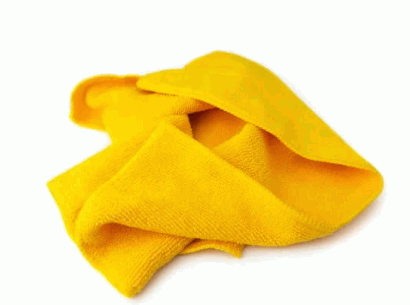
Bucket Of Warm Water
Having a bucket of warm water with a gentle cleaning solution is essential for damp cleaning wood floors effectively. The warm water helps dissolve residues, while the cleaning solution ensures a thorough cleanse without harsh chemicals.
This combination is particularly effective in breaking down dirt and grime that may have accumulated on the wood surface. By using warm water, you are not only aiding in loosening stubborn residues but also preventing any potential damage that cold water could cause to the wood.
The gentle cleaning solution further complements this process by providing a non-abrasive way to lift dirt without compromising the floor’s finish. Using harsh chemicals or abrasive scrubbing techniques can strip away the protective layer on the wood, making it vulnerable to scratches and wear over time.
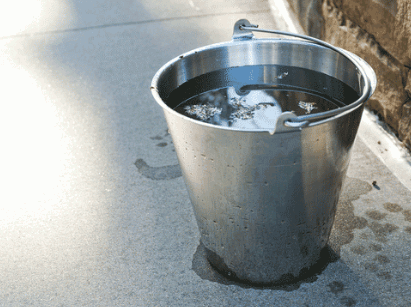
How To Clean Plaster Dust Off Wood Floors?
Cleaning plaster dust off wood floors requires a systematic approach involving sweeping, mopping, and using a vacuum to ensure a thorough cleanup. The use of a damp microfiber cloth with water is crucial for removing any residue and achieving a shining finish.
- Start by gently sweeping the wood floors to remove the loose plaster dust particles. This initial step helps to eliminate the surface debris before moving on to a deeper cleanse.
- Once the sweeping is done, proceed with vacuuming the floor to extract dust from crevices and corners. The vacuum’s attachments can be useful in reaching tight spots.
- Following the vacuuming, dampen a microfiber cloth with water and carefully wipe the floor surface. This final touch will not only remove any remaining dust but also restore the floor’s luster, leaving it looking pristine.
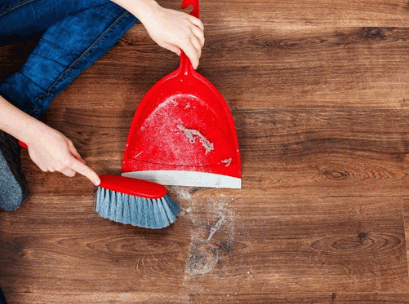
Use A Soft Bristle Brush To Remove Loose Dust
Start the cleaning process by using a soft bristle brush to gently remove loose dust and debris from the wood floors. This initial step helps prepare the surface for deeper cleaning and maintenance.
By utilizing a soft bristle brush, you can ensure that the delicate wood floors are treated with care during the initial dusting phase. The soft bristles effectively sweep away loose particles without scratching or damaging the surface. This gentle approach not only safeguards the integrity of the wood but also sets the foundation for the subsequent cleaning steps, allowing for a more thorough and effective overall maintenance routine.
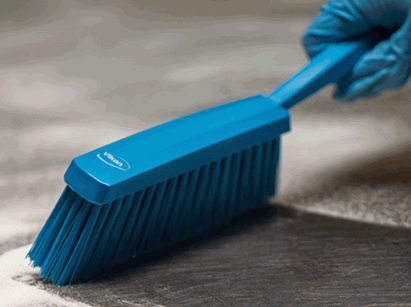
Vacuum The Area Thoroughly
Thoroughly vacuum the wood floor area to remove dust, dirt, and debris that may have settled. Regular vacuuming is essential for ongoing maintenance and restoration of the floor’s quality.
By diligently vacuuming the wood floor, you can effectively eliminate allergens and other harmful particles that accumulate over time, improving indoor air quality and promoting a healthier environment.
The process also helps prevent scratches and wear from small abrasive particles, preserving the natural beauty and longevity of the wood. Consistent vacuuming not only maintains the aesthetic appeal of the floor but also plays a crucial role in prolonging its lifespan, ensuring that it remains a durable and visually appealing asset in your living space.
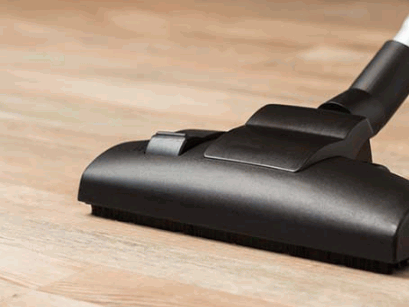
Dampen A Microfiber Cloth With Warm Water
Prepare a microfiber cloth dampened with warm water as a gentle and effective tool for cleaning wood floors. The damp cloth helps remove residues and dirt without harsh abrasives.
Dampening the cloth with warm water is crucial to ensure that the cleaning process is gentle on the wood floor surface. The warmth of the water helps to loosen stubborn residues while the microfiber material picks up the dirt easily. By using a damp cloth instead of a soaking wet one, you ensure that excess water is not left behind on the wood, which could potentially cause damage. This method not only cleans the floor effectively but also helps maintain its natural beauty and shine.
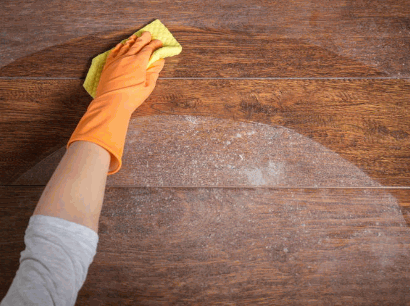
Gently Wipe The Wood Floors
Using the damp microfiber cloth, gently wipe the wood floors to remove any residue or remaining dust. The gentle cleaning action ensures a thorough cleanse without harming the floor surface.
This method is particularly effective in picking up particles and debris that can accumulate on the floor without causing any damage. The slight dampness of the cloth helps to loosen stubborn dirt and grime, allowing for easier removal. By using a gentle wiping motion, you can maintain the floor’s integrity and shine, as harsh scrubbing or abrasive materials can lead to scratches and dullness. Along with the proper technique, choosing a suitable cleaning solution that is safe for wood floors is essential to preserve their natural beauty and longevity.
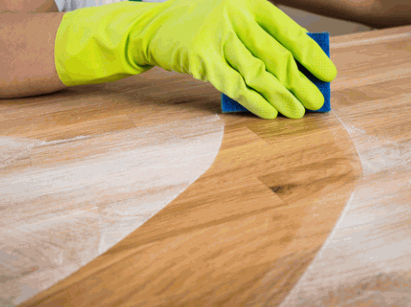
Repeat If Necessary
If any stubborn residue or dust remains, repeat the cleaning process as necessary until the wood floors are spotless. This approach ensures thorough maintenance while saving time and effort.
Consistency is key when it comes to keeping wood floors in optimal condition. By establishing a regular cleaning routine, you can prevent the buildup of dirt and grime, reducing the need for intensive cleaning sessions. Incorporating time-saving tips like using a microfiber mop for quick daily sweeps and employing a gentle wood floor cleaner for more thorough cleanings can make the maintenance process more efficient. Remember, regular upkeep not only enhances the aesthetics of your space but also prolongs the lifespan of your wood floors.
How To Prevent Plaster Dust From Getting On Wood Floors?
Preventing plaster dust from settling on wood floors involves proactive measures during renovation and cleanup. Implementing preventive steps can help safeguard the floors from potential damage and simplify the refinishing process.
- During renovation activities, it is crucial to seal off the areas where plasterwork is being done to prevent the dust from spreading.
- Covering the floors with protective materials such as heavy-duty plastic or drop cloths can significantly reduce the amount of dust settling on the wood surfaces.
- Using a HEPA-filtered vacuum and damp cloths for cleanup rather than dry sweeping can help contain and remove the dust more effectively.
These preventive actions not only preserve the quality of the wood floors but also make future maintenance and refinishing tasks much easier.
Cover The Floors Before Starting Any Plastering Work
Prior to commencing plastering work, protect wood floors by covering them with protective gear or furniture.
This preventive step is crucial in ensuring the longevity and aesthetic appeal of wood floors. Plastering can generate copious amounts of dust that may infiltrate the floor’s surface, leading to difficult cleaning processes. By proactively safeguarding the wood floors, you can mitigate the risk of scratches, stains, or other forms of damage.
This simple yet effective measure not only preserves the quality of the floors but also saves time and effort in post-renovation cleanup. Remember, a little prevention goes a long way in maintaining the integrity of your home’s wooden surfaces.
Use A Dust Extractor While Sanding
Employ a dust extractor when sanding to prevent plaster dust from spreading to wood floors. This equipment captures airborne particles, ensuring a cleaner workspace and minimizing cleanup efforts.
By utilizing a dust extractor, you can significantly reduce the risks of plaster dust settling on sensitive wood surfaces, thereby avoiding costly damage and time-consuming cleanup procedures. The machine’s powerful suction mechanism efficiently traps dust particles as soon as they are created, preventing them from circulating in the air and settling on different surfaces. This not only contributes to a healthier work environment by minimizing respiratory hazards but also results in a more efficient sanding process with fewer interruptions for cleaning.
Clean Up Regularly During The Plastering Process
Frequent cleaning during the plastering process is essential to prevent dust buildup on wood floors. Using a gentle cleaning solution regularly ensures that any dust or residues are promptly removed.
Regular cleanup not only maintains the aesthetic appeal of your wood floors but also protects them from potential damage caused by plaster dust accumulation. Dust and residues can easily scratch and wear down the wood surface if left unattended. By incorporating a gentle cleaning solution into your cleaning routine, you can efficiently combat plaster dust and maintain the beauty of your floors.
Consistent maintenance throughout the plastering process is crucial to ensure that your wood floors remain in top condition and avoid any long-term issues.
Use A Sealer On The Wood Floors After Cleaning
Applying a sealer to wood floors after cleaning helps preserve and restore the surface. The sealer acts as a protective barrier, shielding the floors from potential damage caused by plaster dust or other contaminants.
It plays a vital role in maintaining the floor’s quality over time, ensuring that the natural beauty of the wood is preserved. By forming a durable layer over the wood, the sealer prevents scratches, stains, and moisture from penetrating the surface. This protective shield also makes cleaning easier, as it reduces the likelihood of dirt and grime getting ingrained in the wood.
Regular application of a sealer not only enhances the aesthetic appeal of the floors but also prolongs their lifespan, making them a long-lasting investment in your home.
